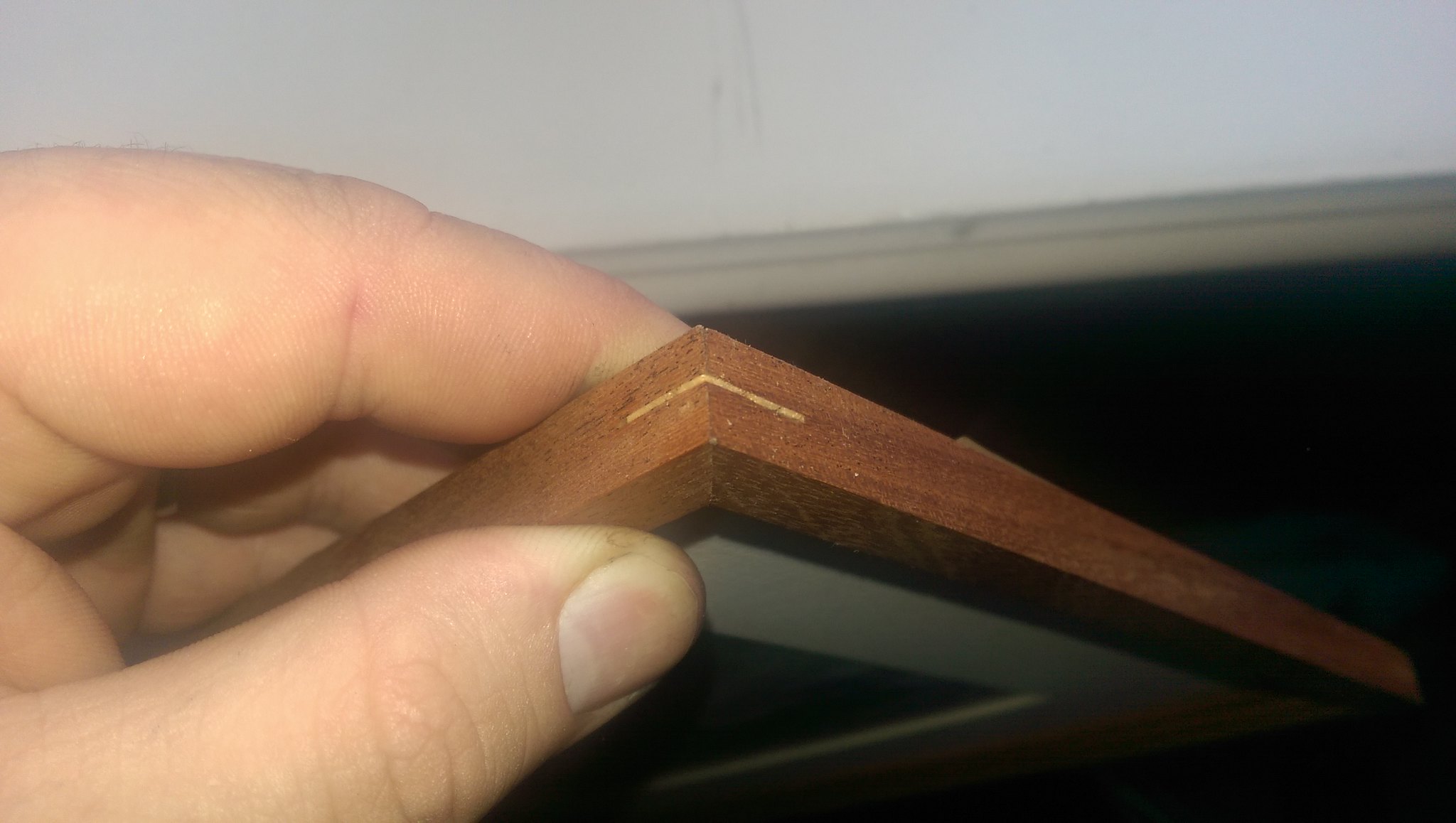timbo614
Established Member
I have made the parts for a small oak picture frame 4" x 5" the framing is 1/2" square with a rebate and mitred corners, very simple. That has come out OK. but being a beginner at this didn't think in advance how to fix and assemble it.
I can't find anything in search so I'm asking how do people fix them together? There isn't a lot of surface area to work with so I am suspicious of just glueing. Plus I have a problem clamping it as I have a couple of picture frame corner clamps but they overhang the short side so with them it would be glue up two "V" shaped halves and hope they fit together.
So I can see: a) glue with a pin through from the side b) Glue with a thin triangular piece on the back. c) make a tiny biscuit type joint + glue but that looks tricky. I've taken a (blurry) picture.
b) Glue with a thin triangular piece on the back. c) make a tiny biscuit type joint + glue but that looks tricky. I've taken a (blurry) picture.
Youtube & google have a lot of answers for large frames searching "small frame" always gets me something 16x20 and wide!
TIA. Timbo.
I can't find anything in search so I'm asking how do people fix them together? There isn't a lot of surface area to work with so I am suspicious of just glueing. Plus I have a problem clamping it as I have a couple of picture frame corner clamps but they overhang the short side so with them it would be glue up two "V" shaped halves and hope they fit together.
So I can see: a) glue with a pin through from the side
Youtube & google have a lot of answers for large frames searching "small frame" always gets me something 16x20 and wide!
TIA. Timbo.


































